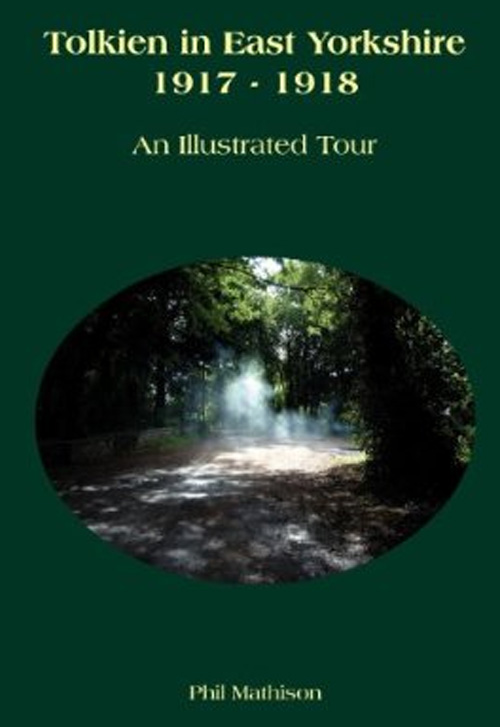Tolkien in East Yorkshire 1917 - 1918
Review

Tolkien in East Yorkshire 1917 - 1918: An Illustrated Tour,
Phil Mathison, Dead Good Publications, 2012, £8.99.
ISBN: 978-0-9562994-1-3
Most people are familiar with the works of J. R. R. Tolkien (1892-1973). His writings, most notably "The Hobbit" and "Lord of the Rings", have sold in millions of copies round the world and in many language versions. Less familiar to his readers, perhaps, is Tolkien's military career during World War I. Probably even less well known is his enforced stay in the south east Holderness area of the East Riding of Yorkshire during 1917 and 1918. Tolkien enlisted in the Lancashire Fusiliers at Oxford in 1915, having just graduated from the University. He was commissioned as an Officer and went out to France in 1916, just before the Battle of the Somme, in July and in which he became involved. Like many, he became ill with trench fever and was invalided home in late 1916. He improved under treatment, but was judged unfit to return to the Western Front. He was then posted in 1917 to another section of the Lancashire Fusiliers guarding the Holderness coast against possible German attack. Hence, Tolkien stayed in East Yorkshire, where he was to remain for the rest of the war. The author has written an interesting and very detailed account of Tolkien's military duties in East Yorkshire. He has drawn on much careful research of official documents and locations connected with Tolkien. Obviously, after almost a century, little remains of the military sites, but there are good photographs of buildings and areas connected with the writer. Mathison admits that some of his ideas cannot always be backed up, especially his theories on the links to "Middle Earth", which Tolkien could have been shaping at this time of little military activity in a remote rural area. He also points out that the writer's loneliness was eased by the comforting presence of his wife, Edith. Tolkien's health remained very variable and for the last few months of the war, he was back in military hospital in Hull, from where he was discharged back into civilian life and a subsequent academic career. Having known this area since childhood, I can confirm that this book is an interesting and fascinating glimpse into the career of one of our best known 20th Century authors. This well researched account is thoroughly recommended.

